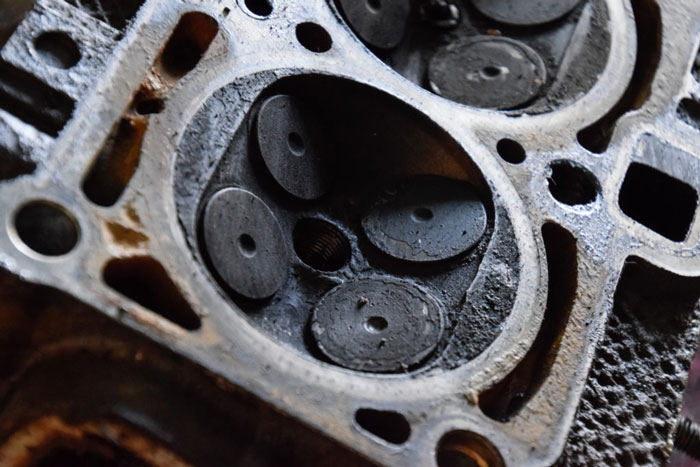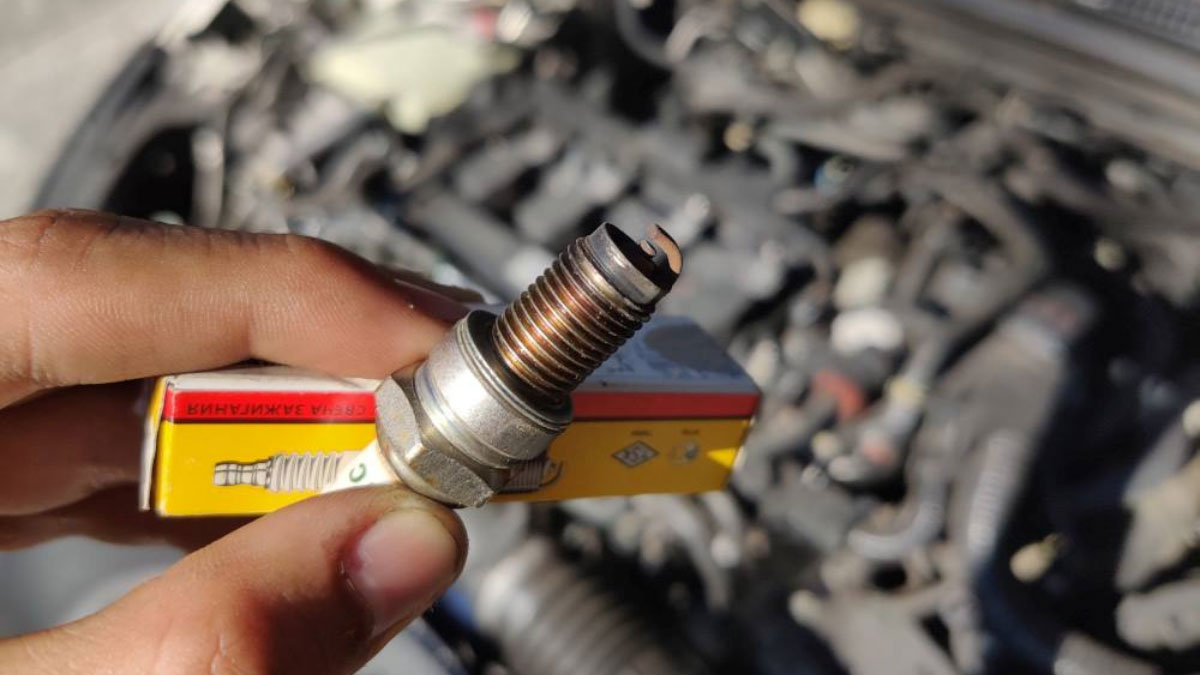Ever heard your car making strange noises or noticed a drop in performance? You might be dealing with a burned exhaust valve. This issue can sneak up on you and cause a range of problems, from minor annoyances to serious engine damage.
I’ve seen how a burned exhaust valve can turn a smooth ride into a frustrating experience. Understanding the symptoms can save you time, money, and a lot of headaches. Let’s jump into the telltale signs so you can catch this problem early and keep your car running smoothly.
Understanding Burned Exhaust Valves
Burned exhaust valves are a common issue in vehicles, leading to various engine problems if not addressed promptly. Recognizing the symptoms and understanding the causes can help prevent severe damage.
What Is a Burned Exhaust Valve?
A burned exhaust valve occurs when the valve doesn’t properly seal, causing gas to leak during the combustion process. This leakage can lead to overheating and erosion at the valve edge. Below are key terms:
- Exhaust Valve: A component that releases burnt gases from the engine’s cylinder.
- Combustion: The process of burning fuel and air mixture to generate power.
- Valve Seal: Ensures tight closure to prevent gas leaks during the combustion cycle.
Common Causes of Burned Exhaust Valves
Several factors can contribute to burned exhaust valves. It’s essential to identify and address these causes:
- Overheating: Excessive engine heat can damage the valve edges.
- Lean Air-Fuel Mixture: An imbalanced mix can cause the engine to run hotter, increasing the risk of valve burn.
- Improper Valve Clearance: Incorrect adjustment can lead to insufficient sealing and overheating.
- Faulty Ignition Timing: Incorrect timing can cause incomplete combustion and higher temperatures.
By understanding these causes, I can take preventative measures to ensure my vehicle runs smoothly. Regular maintenance and timely interventions are key to avoiding major engine damage.
Identifying the Symptoms
Recognizing a burned exhaust valve early can save your engine from significant damage. This section outlines key symptoms to watch for.

Loss of Engine Power
One significant symptom is Loss of Engine Power. When an exhaust valve burns, it affects the engine’s compression, leading to reduced power. Vehicles might struggle to accelerate or maintain speed, especially when going uphill or carrying heavy loads.
Misfiring Engine
An engine misfire is another common indicator. Misfires occur when the air-fuel mixture in one or more cylinders fails to ignite properly. This results in uneven engine performance, characterized by jerking or chugging movements. You may notice the check engine light turning on as well.
Decreased Fuel Efficiency
Decreased Fuel Efficiency often accompanies a burned exhaust valve. Due to incomplete combustion, the engine uses more fuel to generate the same amount of power. Keep an eye on your fuel gauge; frequent refueling could indicate a problem.
Engine Overheating
Engine Overheating may also signal a burned exhaust valve. Improper sealing in the combustion chamber can cause a buildup of heat. Overheating can damage other engine components, making early detection crucial.
Staying alert to these symptoms can help you address a burned exhaust valve before it leads to severe engine damage. Regularly monitoring your vehicle’s performance and maintaining it can prevent costly repairs and ensure smooth operation.
Diagnostic Methods
Detecting a burned exhaust valve requires a mix of visual cues and technical tests. These methods help confirm the presence of the issue before irreversible engine damage occurs.
Visual Inspection
A visual inspection involves examining the valve without dismantling the engine entirely. Key indicators of a burned exhaust valve can often be seen through the following:
- Exhaust Smoke: Dark or black exhaust smoke suggests incomplete combustion.
- Spark Plugs: Inspecting spark plugs for dark or sooty deposits can hint at combustion issues.
- Engine Bay: Look for signs of excessive heat or damage around the valves.
Compression Testing
Compression tests measure the cylinder pressure to identify faulty valves. Engines with burned exhaust valves often have lower compression in one or more cylinders. Follow these steps to perform a compression test:
- Warm the engine to operating temperature.
- Remove the spark plugs.
- Insert the compression gauge in place of a spark plug.
- Crank the engine and record the pressure readings.
- Compare the readings across all cylinders.
Use of Diagnostic Tools
Modern vehicles benefit from advanced diagnostic tools that provide detailed data on engine performance. Key tools include:
- OBD-II Scanner: Connects to the vehicle’s onboard diagnostics system and reads error codes related to valve issues.
- Borescope: A small camera that slides into the cylinder to give a close-up view of the valve condition.
- Infrared Thermometer: Detects abnormal heat patterns in the engine, indicating potential exhaust valve problems.
Each diagnostic method contributes to a comprehensive understanding of the valve’s condition, enabling timely repairs and maintenance.
Long-term Effects and Solutions
Burned exhaust valves can cause significant damage if not addressed promptly. Below, you’ll find key information about potential engine damage and repair options to prevent further issues.
Potential Engine Damage
Burned exhaust valves lead to several long-term issues, including:
- Reduced Engine Performance: Engines lose power and efficiency due to poor combustion.
- Increased Emissions: Unburned fuel exits through the exhaust, raising harmful emission levels.
- Engine Misfires: Cylinders with burned valves struggle to maintain consistent combustion.
- Potential Engine Overhaul: Severe, prolonged damage may necessitate a complete engine rebuild.
Repair and Replacement Options
To fix a burned exhaust valve, follow these steps:
- Valve Inspection: Use a borescope or remove the cylinder head for detailed examination.
- Replacement of Damaged Valves: Replace burned or warped valves with new ones.
- Valve Seat Repair: If seats are damaged, machine them to restore proper seating.
- Check and Adjust Valve Clearance: Ensure proper clearance to avoid future overheating.
- Test Ignition Timing: Verify timing to prevent improper combustion.
- Regular Maintenance: Schedule periodic inspections and servicing.
- Monitor Air-Fuel Mixture: Ensure the mixture is not too lean.
- Use Quality Fuel: High-quality fuel reduces the risk of deposits and overheating.
These solutions and preventive measures help maintain engine health, ensuring longevity and reliability.
Conclusion
Recognizing the symptoms of a burned exhaust valve is crucial for maintaining your vehicle’s health. Early detection can save you from costly repairs and extensive engine damage. Regular maintenance and using quality fuel are key preventive measures. Always stay vigilant about your vehicle’s performance and consult a professional if you notice any signs of trouble. By taking these steps you’ll ensure your engine remains efficient and reliable for years to come.
Frequently Asked Questions
What causes burnt exhaust valves in vehicles?
Burnt exhaust valves can be caused by overheating, a lean air-fuel mixture, improper valve clearance, and faulty ignition timing.
How can you detect a burnt exhaust valve early?
Early detection of a burnt exhaust valve can be identified by listening for engine misfires, reduced engine performance, and increased emissions.
What are the long-term effects of a burnt exhaust valve?
Long-term effects include reduced engine performance, increased emissions, and engine misfires. In severe cases, it can lead to a complete engine overhaul.
Is it possible to repair a burnt exhaust valve?
Yes, repair options include valve inspection, replacement of damaged valves, valve seat repair, and checking and adjusting valve clearance.
How do you prevent exhaust valve issues?
Regular maintenance, monitoring the air-fuel mixture, using quality fuel, and timely checking and adjusting valve clearance can help prevent exhaust valve issues.
Can a car continue to run with a burnt exhaust valve?
A car can run with a burnt exhaust valve, but continued operation will result in increased internal damage and eventually lead to engine failure.
What is the importance of ignition timing in preventing burnt exhaust valves?
Proper ignition timing ensures efficient combustion and prevents overheating, reducing the risk of burnt exhaust valves.
How does a lean air-fuel mixture contribute to burnt exhaust valves?
A lean air-fuel mixture leads to higher combustion temperatures, which can cause exhaust valves to overheat and burn.

